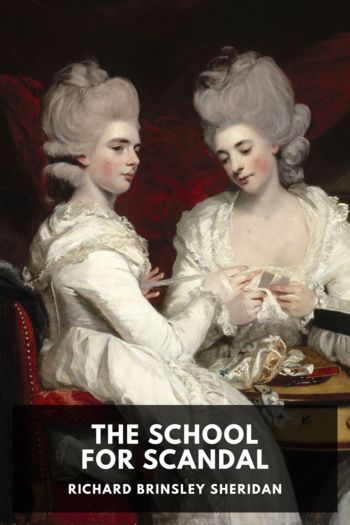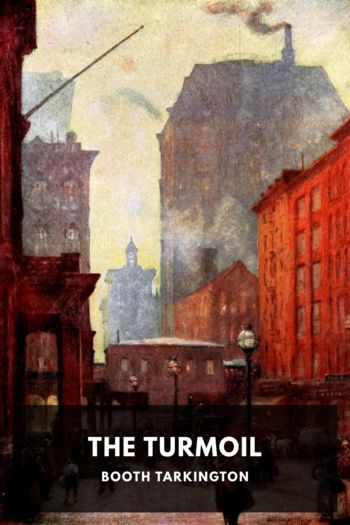Malaysian Maverick: Mahathir Mohamad in Turbulent Times, Barry Wain [best mystery novels of all time .txt] 📗

- Author: Barry Wain
Book online «Malaysian Maverick: Mahathir Mohamad in Turbulent Times, Barry Wain [best mystery novels of all time .txt] 📗». Author Barry Wain
"You can buy a house in Malaysia cheaper than you can buy a car," one analyst wrote in 1989.[50] Malaysian car owners were generally paying three times the price of a similar model in the United States. Not only were rivals Honda, Toyota, Nissan and Mazda priced out of the market, but their once-established local assemblers, all Chinese-owned, were decimated in the "ethnic bypass" exercise and forced to shed thousands of skilled workers. The cost of Proton to Malaysian taxpayers, in the form of subsidies, totaled between RMl1 billion and RM12 billion by the mid-1990s, according to a government study.[51] The full cost remained unknown.
Mitsubishi bailed out of Proton in 2004, ending a two-decade partnership that proved extremely lucrative for the Japanese group. When Mitsubishi was selected by Dr. Mahathir for the project without any competitive bidding, it had trailed its main Japanese competitors in Malaysia, with a passenger-car market share of less than 10 per cent. Mitsubish Corporation and its associate Mitsubishi Motors Corporation, which each held 15 per cent of Proton, were guaranteed handsome returns regardless of the venture's profitability. They were paid to provide the technology, components and training, as well as collecting patent, design and other fees. Dissatisfied with Proton's performance in 1988, the Malaysian government replaced the company's bumiputra management with Mitsubishi executives. Mitsubishi's withdrawal from Proton, through the sale of shares to other investors, reflected the Japanese companies' diminished role in Malaysia.[52] Over the previous decade, Proton had cut its dependence on Mitsubishi by acquiring auto-engineering companies such as Britain's Lotus Group International. Proton also started making its own engines, which it previously purchased from Mitsubishi and its Japanese suppliers. But it was not easy for Proton to strike out on its own.
Proton's day of reckoning neared as Malaysia met its obligations under an ASEAN Free Trade Area pact, which required tariffs on all manufactured goods in the most developed member countries to be reduced to no more than 5 per cent by 2002. Kuala Lumpur obtained an exemption for cars and components: 20 per cent by 2005 on the way to the 5 per cent cap by 2008. As Proton gradually became exposed, its share of Malaysia's 430,000 a year passenger-car market tumbled from 60 per cent in 2002 to 41 per cent in 2005 — and the company slipped back into the red. The entire Malaysian motor industry, employing a total workforce of more than 100,000, was vulnerable, including Proton's two factories built at a cost of RM2 billion and producing a range of cars from 1300 c.c. to 2000 c.c.; another Malaysia-Japan joint venture, which began producing a second "national car" in 1994, the tiny 660 c.c. Kancil (mousedeer) based on Daihatsu Motor Company's Mira model; a third "national car", a Citroen with 1100 c.c. to 1500 c.c. versions, assembled by Malaysian interests with technology and equipment supplied by France's Automobiles Citroen SA; and dozens of uncompetitive local autoparts makers and vendors. The biggest threat emanated from Thailand, which had pursued the opposite strategy to Malaysia in the 1990s. Thailand turned itself into the "Detroit of the East" by eschewing a national car and instead luring major auto makers by offering itself as a global production base.
One possible way to save Proton was for it to forge an alliance with a major foreign automaker. But the Malaysian government, which retained control of the company through state investment vehicle Khazanah Nasional Bhd., was reluctant to sell a major stake or allow management control to pass into the hands of foreigners. Yet that seemed to be the only way to attract a suitable partner, which naturally would want to protect its technology and completely upgrade Proton. The company's future became one of the first serious points of contention between Dr. Mahathir and his successor, Abdullah Badawi.
To revive Malaysia's flagging economy, which had been punctured by global recession and further burdened by the government's heavy industry commitments, the Mahathir administration in the early 1980s drastically altered the country's development strategy. It reduced the government's role in the economy and gave a bigger stake once again to private business. To switch from state-spurred to private sector-led growth, Malaysia encouraged foreign investment and adopted a policy of privatization, which Dr. Mahathir unveiled in 1983. Privatization was novel, as the worldwide wave that was to become identified with British Prime Minister Margaret Thatcher and U.S. President Ronald Reagan was just getting started. It was also radical, since it promised to reverse the method chosen by Dr. Mahathir's predecessors in pursuing the NEP: creating public enterprises to redistribute wealth and generate jobs.
Trying to spend its way out of recession, Malaysia had sunk into economic malaise. Its expansionary fiscal policies, funded by heavy borrowing at home and abroad, led to serious budget deficits and rapidly rising debt-service charges. Between 1970 and 1982, government consumption and investment as a share of GDP had jumped almost 50 per cent as the bureaucracy quadrupled. Counting investments in Petronas, the public sector share of GDP was about 38 per cent in 1982, one of the highest levels in the non-communist world.[53] After three straight years of large budget deficits — the shortfall reached a staggering 19 per cent of GDP in 1982, financed by foreign borrowing that tripled in three years — the government concluded that, as one senior finance official put it, "We bit off more than we can chew."[54]
As Dr. Mahathir's finance minister at the time, "I did try to contain his obsession with big spending," said Tengku Razaleigh Hamzah. Projects spearheaded by the prime minister that contributed to Malaysia's soaring debt — Perwaja steel,





Comments (0)